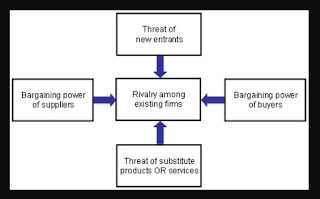Years ago, my friend Mary made a career move from the IT department of a large corporation to the IT department of a county school system. She quickly realized her new employer was not current on IT best practices and procedures and that IT cost, performance, and quality targets were routinely missed. She raised her concerns and prepared an improvement action plan, but no one within IT was interested. They knew they had problems, but they’d had them for years and since they weren’t being held accountable by the superintendent of schools, or by their stakeholders, they felt no pressure to change anything.
Many of us have been in situations like that. We recognized a need for change, and argued for change, only to learn that our version of change just wasn’t going to happen. Too difficult, or disruptive, or expensive, or the time wasn’t right, or the business case was weak, or decision-makers just didn’t believe it was necessary.
Mary was disappointed, so she considered her options:
- Complain about her new employer’s blind spot (whiner)
- Keep arguing for change (crusader)
- Accept the situation (sellout)
- Go work somewhere else (quitter)
None of those options were appealing, yet according to Eckhart Tolle, there are only three “sane” choices in such a situation:
“Leave the situation, change the situation or accept it. All else is madness.“
Mary eventually moved on, but when she read a news report years later about a critical independent performance audit done on her former employer at the request of the school board, she was curious enough to get a copy. Many of the conclusions and recommendations for the IT department tracked the action plan she had prepared years prior, right down to details on strategy, organization design, staffing, service level agreements, and operational performance measures.
Since humans delight in being right (it’s like a drug that feeds our ego and fortifies our sense of self-worth) I wondered how Mary reacted to the audit findings. Did she feel vindicated?
“A little bit, particularly when I talked about it with some of my former colleagues, but that feeling was fleeting. I didn’t need affirmation—I knew what I had recommended was appropriate. I was still disappointed that I couldn’t get anyone to pay attention and do something. The fact that it took an outside audit to shine a spotlight on operational failures that were known and had been happening for years reminded me of why I had been so frustrated while working in that organization. What I felt most was relief that I had moved on.”
Mary obviously expected the people she worked with to care about performance, listen to her recommendations, and be interested in taking improvement actions. When those expectations went unfulfilled, even the affirmation in the audit finding wasn’t enough to overcome her frustration and disappointment.
We all have expectations of the people we interact with in the working world. Were hers reasonable? Should she have approached the situation differently? What advice would you offer to help her get over her frustration and disappointment and avoid unfulfilled expectations in the future?







